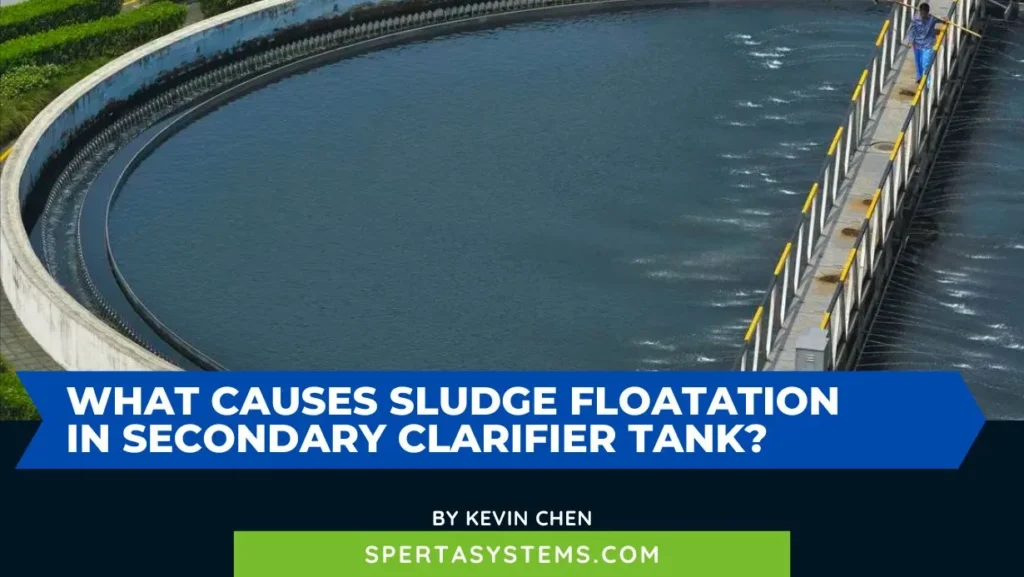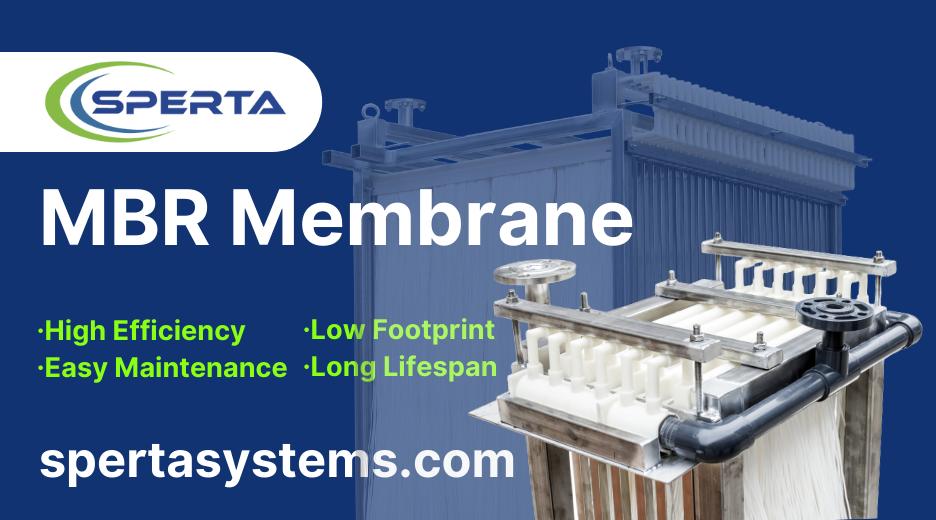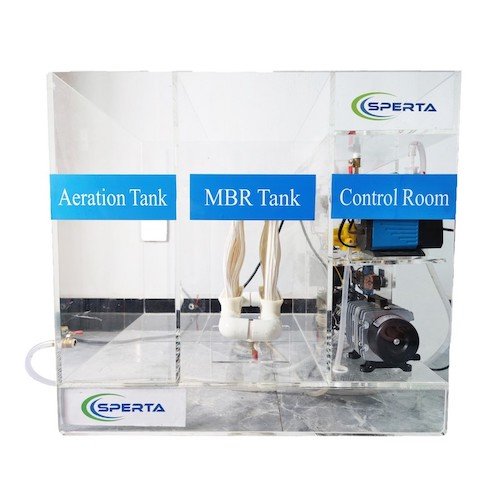When sludge expands, the SVI (Sludge Volume Index) value significantly exceeds the standard, which substantially increases the SS (Suspended Solids) value of the effluent from the secondary clarifier. This situation also causes the COD (Chemical Oxygen Demand), BOD (Biochemical Oxygen Demand), and TN (Total Nitrogen) values in the effluent to exceed their limits. If immediate measures are not taken to control the loss of activated sludge, it could lead to a sharp decrease in the number of microorganisms in the biological reactor, a decline in system performance, or even a system collapse.
What Causes Sludge Floatation in Secondary Clarifier Tanks?
Under anoxic conditions, increasing the residence time of activated sludge can enhance the possibility of denitrification, producing nitrogen gas. When the influent water quality contains an excess of organic matter, the concentration of ammonia nitrogen in the influent water increases, further increasing the possibility of denitrification.
Additionally, insufficient dissolved oxygen, low pH values, and extended sludge age can also promote the occurrence of denitrification. After the nitrification reaction occurs, the sludge is propelled upwards by the nitrogen gas (N2), accelerating the sludge’s floatation. Therefore, the main factors affecting sludge floatation are summarized as follows:
1) Influent Water Volume
A sudden increase in influent water volume raises the hydraulic load on the surface of the secondary clarifier, increasing the upward flow rate and affecting the normal settling of activated sludge. A large influent shock load can destabilize the sludge in the secondary clarifier, affecting the normal settling of activated sludge and accelerating the fluctuation of the sludge layer within the clarifier.
2) Temperature
As the temperature rises, nitrogen gas produced by denitrification in the secondary clarifier increases. The denitrification rate is related to the concentration of nitrates in the wastewater, temperature, carbon source, and sludge concentration.
In actual production operations, this manifests as large yellowish blocks of floating sludge around the secondary clarifier, accompanied by bubbles during floatation. Especially in cold northern regions, the temperature rise directly accelerates the denitrification process, causing large blocks of sludge to float up with N2 in the secondary clarifier.
3) pH Value
In wastewater treatment, pH values that are too high or too low are detrimental to the survival of microorganisms and significantly harm the normal biological treatment effect. Especially when the pH value is below 5, the impact on sludge expansion in the secondary clarifier is greater, accelerating the floatation of activated sludge, leading to the loss of activated sludge, and directly affecting the compliance of effluent water quality.
4) Dissolved Oxygen
The ability of O2 to accept electrons is far higher than that of NO2 and NO3. Oxygen in the wastewater can suppress the nitrogen gas produced by denitrification, delaying the denitrification rate.
High dissolved oxygen levels accelerate metabolism, and in the short term, sludge activity is good, and organic matter decomposes quickly. However, over time, dissolved oxygen will flow with the water, directly producing large areas of bubbles in the aerobic biological reactor.
When dissolved oxygen is too low, the sludge in the secondary clarifier turns gray due to anoxia; if the lack of oxygen lasts too long, it turns black, often accompanied by the production of small bubbles. The effluent water quality has a large degree of color, a yellowish color, a heavy sewage smell, and fewer and smaller surface bubbles.
5) Sludge Residence Time in the Secondary Clarifier
When the sludge concentration in the secondary clarifier is high, the lower the dissolved oxygen (DO), the longer the sludge’s residence time. Consequently, the denitrification rate in the clarifier is high, and the amount of nitrogen gas produced during the denitrification process is large.
As the depth of the sedimentation tank increases, the saturated concentration of nitrogen gas in the secondary clarifier also increases. At the effluent outlet of the secondary clarifier, as the water pressure decreases, the saturated concentration of nitrogen gas decreases, releasing nitrogen gas and causing sludge floatation.
How to Prevent Sludge Floatation in Secondary Clarifiers?
To prevent sludge floatation, the following measures can be taken:
1) Ensure Relative Stability of Water Volume
When designing a wastewater treatment plant, control wells and adjustment tanks are set up. By controlling the opening angle of the valves, the water volume entering the wastewater treatment system is kept relatively stable. These measures ensure the system operates smoothly, avoiding significant shocks to the system and ensuring the stability of the entire system’s operation.
2) Maintain Temperature/pH Within Appropriate Ranges
Based on the operational experience of wastewater treatment plants, temperature has a certain impact on the microorganisms in activated sludge. The suitable temperature range for aerobic-activated sludge is between 20-35°C. In summer, when the temperature is high, the impact of temperature on the microorganisms in activated sludge and the wastewater treatment effect is insignificant.
In cold weather, especially in cold regions where temperatures drop below -10 °C, microbial activity is affected, leading to sludge expansion. Therefore, measures such as controlling DO, adjusting sludge concentration, sludge return flow, and sludge age are needed in cold northern regions to prevent sludge expansion.
The pH value at the wastewater inlet is generally between 7-8, which is conducive to the microbial treatment of organic matter. If the pH value of the wastewater treatment plant’s influent is below 5, chemical agents should be used to adjust the pH value.
3) Increase Dissolved Oxygen Concentration in the Influent
The main body of activated sludge is microbial flocs. When the oxygen supply is insufficient, filamentous bacteria and fungi proliferate extensively, leading to sludge bulking, sludge floating in the secondary clarifier, and abnormal effluent.
Oxygen can inhibit most denitrifying bacteria themselves, and some components of these bacteria need to be synthesized under aerobic conditions. Increasing the dissolved oxygen concentration in the influent is one effective measure to prevent sludge floatation.
Additionally, maintaining a certain level of dissolved oxygen is essential for the normal metabolism of microorganisms and ensuring the effluent water quality meets standards. In practical wastewater treatment, from the inlet to the outlet of the aerobic tank, the DO (Dissolved Oxygen) level should increase stepwise. According to wastewater treatment experience, at the inlet of the aerobic tank, the DO should be controlled at above 0.5 mg/L; in the middle section of the aerobic tank, the DO should be maintained at above 2 mg/L.
4) Maintain an Appropriate Sludge Concentration
When sludge settling and stability performance deteriorate, sludge bulking occurs. As sludge is lost, the sludge concentration in the secondary clarifier decreases. With a constant sludge return rate, the sludge concentration in the biological reactor will also decrease, depending on the extent of activated sludge loss and the settling performance of the sludge. The decrease in MLSS (Mixed Liquor Suspended Solids) value affects the metabolism of microorganisms in the biological reactor, ultimately impacting the entire wastewater treatment system’s performance.
Increasing the sludge return rate is one way to maintain the concentration of activated sludge. After increasing the sludge return rate in the secondary clarifier, the water volume flowing from the biological reactor to the sedimentation tank also increases, leading to an increase in the surface load of the sedimentation tank, shorter sludge settling time, and more incomplete sludge settling.
Based on practical experience, starting the external return frequency pump to increase the external return sludge ratio is possible. By controlling the operating time of the external return pump, the sludge external return ratio can be maintained at around 100%. Controlling the operating time of the primary sedimentation tank sludge pump can regulate sludge discharge from the primary sedimentation tank. By controlling the operating time of the sludge pump, sludge can be discharged promptly.
These measures allow the sludge concentration and activity within the biological reactor to be effectively controlled, and the sludge age can be kept within an appropriate range.
Conclusion
The main factors influencing sludge floatation in secondary clarifiers include water quantity and quality, temperature, pH value, dissolved oxygen, and sludge retention time.
To effectively manage and prevent sludge floatation in secondary clarifiers, it’s essential to maintain a balanced and stable operational environment within the wastewater treatment system. This involves ensuring a consistent influent water volume, maintaining temperature and pH within optimal ranges, enhancing the dissolved oxygen concentration in the influent, and keeping the sludge concentration at appropriate levels. By carefully controlling these factors, wastewater treatment plants can mitigate the risk of sludge floatation, thereby maintaining system efficiency and ensuring compliance with effluent quality standards. Adopting these measures will not only prevent potential system failures but also contribute to the sustainable operation of wastewater treatment facilities.
The information above is about the sludge floatation in the secondary clarifier Tank. If you still have related questions about wastewater treatment, please feel free to contact SPERTA.
Shanghai SPERTA Environmental Technology Co., Ltd. has specialized in producing water treatment products for many years. The company has its own MBR membrane technology, a complete technical team, and pre-sales and after-sales service. If you have any needs, please feel free to contact us.













